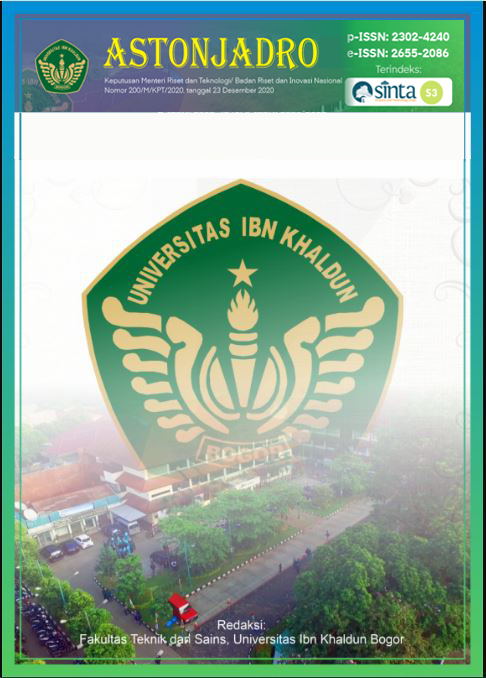Analysis of Transportation Mode Choice for Electric Rail Train (KRL) and Bus For Yogyakarta-Surakarta Travel Routes
DOI:
https://doi.org/10.32832/astonjadro.v12i1.8628Keywords:
mode choice, passenger characteristics, travel characteristics, mode characteristics, binary logit.Abstract
The presence of the electric rail train (KRL) on the Yogyakarta-Surakarta route expands the list of public transportation modes available to residents of Yogyakarta, Surakarta, and surrounding areas. The Yogyakarta-Surakarta route was previously served by one of the road-based transportation, namely Bus, which was widely used but was abandoned by its users due to a variety of factors. The presence of various alternative modes of transportation today, combined with the Covid-19 pandemic, allows users of public transportation services, particularly the Yogyakarta-Surakarta route, to freely make their choices. Data was gathered through direct interviews and online questionnaires distributed using Google forms. Multiple linear regression and binary logit nisbah were used in the data analysis, and the results were obtained using software, specifically Microsoft Excel and Statistical Product and Service Solutions (SPSS). The Study by binary logit results show that lowering the CBUS (Bus fee) by 1,58 times the unit of money from the CKRL (KRL fee) to Rp7.595/trip from the original Rp12.000/trip will increase bus users by 30%. If TBUS (bus time) is accelerated by 1,81 times the unit time from TKRL (KRL time) to 1 hour and 23 minutes/trip from the original 2 hours and 12 minutes, bus users increase by 50%. Bus users will increase by 70% while KRL users will decrease by 30%, so the number of FBUS (bus frequency) must be increased to 16 times/day from the original 10 times/day by 1,69 times FKRL (KRL frequency).
References
Dodi, D., dan Nahdalina, N. 2019. Analisis Pemilihan Moda Transportasi Dengan Metode Discrete Choice Model (Studi Kasus: Bandara Internasional Soekarno Hatta). Warta Ardhia, 44(2), 81-92.
wiatmoko, H., Mudjanarko, S. W., Setiawan, M. I., dan Nabila, N. 2020. Analysis of Passenger Commuter Train Services Surabaya – Sidoarjo. The Spirit of Society Journal, 4(1), 7-12.
Dwiatmoko, H., Nabila., Mudjanarko, S. W., dan Setiawan, M. I. 2020. Peran Angkutan Kereta Api Komuter Dalam Meningkatkan Perekonomian Di Wilayah Gerbang Kertasusila. Scopindo Media Pustaka. Surabaya.
Ismanto, H., dan Pebruary, S. 2021. Aplikasi SPSS dan Eviews dalam Analisis Data Penelitian. Deepublish. Yogyakarta.
Peraturan Menteri. 2012. Nomor 10 : Standar Pelayanan Minimal Angkutan Massal Berbasis Jalan. Kementerian Perhubungan. Jakarta.
Peraturan Menteri. 2015. Nomor 27 : Standar Pelayanan Minimal Angkutan Massal Berbasis Jalan. Kementerian Perhubungan. Jakarta.
Peraturan Menteri. 2019. Nomor 15 : Penyelenggaraan Angkutan Orang Dengan Kendaraan Bermotor Umum Dalam Trayek. Kementerian Perhubungan. Jakarta.
Peraturan Menteri. 2019. Nomor 63 : Standar Pelayanan Minimum Angkutan Orang Dengan Kereta Api. Kementerian Perhubungan. Jakarta.
Putri, F. A., Sulistyorini, R., dan Zakaria, A. 2018. Analisis Pemilihan Moda Dari Mobil Pribadi Ke Bus Trans Lampung Di Bandar Udara Radin Inten II Lampung. Diaspora:Eksakta, 1(1), 11-20.
Rahmayana, P. E., Purba, H. H., dan Susetyo, B. 2021. Improving Ballastless Track Quality Using Project Quality Management and SmartPLS. ComTech: Computer, Mathematics and Engineering Applications, 12(1), 19-32.
Ramadianti, K., dan Widyaningsih, N. 2020. Kajian Preferensi Pengguna Moda Transportasi Kereta Api LRT Jakarta Menuju Stasiun LRT Velodrome. Wahana Teknik Sipil: Jurnal Pengembangan Teknik Sipil, 25(2), 158-165.
Rosyidi, S. A. P. 2019. Perencanaan Transportasi untuk Wilayah Perkotaan. Edisi Revisi. LP3M UMY. Yogyakarta.
Sudaryono. 2019. Metodologi Penelitian : Kuantitatif, Kualitatif, dan Mix Method. Edisi Kedua. Rajawali Pers. Depok.
Sugiyono. 2019. Metode Penelitian Kuantitatif, Kualitatif, dan R&D. Alfabeta. Bandung.
Sujarweni, V. W. 2021. SPSS Untuk Penelitian. Pustaka Baru Press. Yogyakarta.
Supit, R. M., Rompis, S. Y., dan Lefrandt, L. I. 2019. Model Pemilihan Moda Transportasi Online di Kota Manado. Jurnal Sipil Statik, 7(1), 35-48.
Tamin, O. Z. 2000. Perencanaan dan Pemodelan Transportasi. Edisi kedua. Penerbit ITB. Bandung.
Downloads
Published
How to Cite
Issue
Section
License
Copyright (c) 2022 ASTONJADRO

This work is licensed under a Creative Commons Attribution-ShareAlike 4.0 International License.
Paper submitted to ASTONJADRO is the sole property of the Astonjadro Journal. Unless the author withdraws the paper because he does not want to be published in this journal. The publication rights are in the journal Astonjadro.ASTONJADRO
LICENSE
This work is licensed under a Creative Commons Attribution-ShareAlike 4.0 International License.
Based on a work at http://ejournal.uika-bogor.ac.id/index.php/ASTONJADRO













